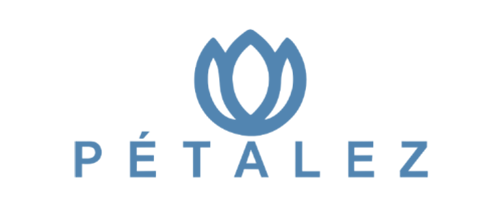
Cold Water vs Warm Water for Acne-Prone Skin in Summer
Share
Healthy, glowing skin starts with something as simple as water temperature. Whether you have oily, dry, sensitive, or combination skin, using the right water temperature paired with the correct cleanser can transform your skincare routine.
But here’s the catch: Hot water can strip your skin of natural oils, while cold water may not cleanse deeply enough. So, what’s the best water temperature for your skin? And which products work best with each? Let’s break it down.
The Hot Water Mistake
You love that steamy shower—it’s relaxing, sure, but your skin hates it. Hot water strips away natural oils, leaving your face dry, tight, and even more prone to breakouts. If you’ve ever stepped out of the shower with red, blotchy skin, you’ve felt the burn (literally).
But what if you need deep cleansing? That’s where Petalez Acne Cleanser & Alluring Bright comes in. It's 2% salicylic acid unclogs pores without over-drying—so even if you occasionally use warm water, your skin stays balanced.
The Cold Water Mythyour
Cold water tightens pores!—Sounds great, right? But here’s the truth: Cold water doesn’t clean deeply enough. It might feel refreshing, but if you wear makeup or sunscreen, it’s like rinsing a greasy pan with ice water—the grime stays put.
Solution? Use cold water after cleansing to calm redness, but always start with lukewarm water + Petalez Cleanser to actually dissolve oil and dirt
The Winner? Lukewarm Water!
The best water temperature for skin is lukewarm—neither too hot nor too cold.
Why?
- Cleanses effectively without stripping moisture
- Safe for all skin types
How to Use It:
- Wash your hands first.
- Splash lukewarm water on your face.
- Apply Petalez Acne Cleanser (pea-sized amount).
- Massage gently for 30 sec – it's mulberry extract brightens while cleansing.
- Rinse thoroughly and pat dry.
Pro Tip:
For double cleansing, use lukewarm water first with an oil-based cleanser, then follow with Petalez to remove residue.
Why Petalez Acne Cleanser & Alluring Bright?
Achieving healthy, glowing skin isn’t just about the products you use—it’s also about how you use them. The best water temperature for your skin is lukewarm, as it effectively cleanses without stripping moisture or causing irritation.
- For Acne-Prone Skin? Lukewarm water + Petalez Acne Cleanser & Alluring
- Bright (with salicylic acid & niacinamide) fights breakouts while brightening dark spots.
- For Dry Skin? Cool-lukewarm water prevents further dryness.
- For Sensitive Skin? Avoid extreme temperatures to prevent redness.
Pro Tip: Always follow cleansing with a hydrating moisturizer to lock in moisture. And if you struggle with acne, Petalez’s 2-in-1 formula is your best bet for clearer, more radiant skin.
FAQs: Water Temperature & Skincare
Q1: Does cold water really close pores?
No, pores don’t have muscles to open or close. Cold water temporarily tightens them, making them appear smaller.
Q2: Can hot water cause premature aging?
Yes! Hot water breaks down collagen over time, leading to fine lines and sagging skin. Stick to lukewarm.
Q3: Is ice water good for acne?
It can reduce swelling in active pimples, but won’t treat acne alone. Use Petalez Acne Cleanser for best results.
Q4: Should I use hot water to remove blackheads?
No! Hot water can irritate skin. Instead, use lukewarm water + a salicylic acid cleanser (like Petalez) to dissolve blackheads gently.
Q5: Can water temperature affect my cleanser’s effectiveness?
Yes!
- Lukewarm water helps active ingredients (like salicylic acid) penetrate better.
- Cold water may prevent proper rinsing, leaving residue.
Q6: How often should I wash my face?
Twice daily (morning & night). If you have oily skin, use Petalez Cleanser both times. For dry skin, alternate with a gentler wash.
Q7: Does Petalez Acne Cleanser work for all skin types?
Yes! Its pH-balanced formula suits oily, dry, and combination skin. Sensitive skin users should patch-test first.


